What to Wear Kayaking in any Season
If you’re going kayaking, be prepared to get soaked. Even on the most pleasant summer days, kayaking will get you wet. The paddle will drop water onto you. You will almost certainly splash yourself or get splashed by a companion. Here you are going to have the full knowledge about What to Wear Kayaking in any Season.
A Day Spent With Water Is Never Waste of Time…!
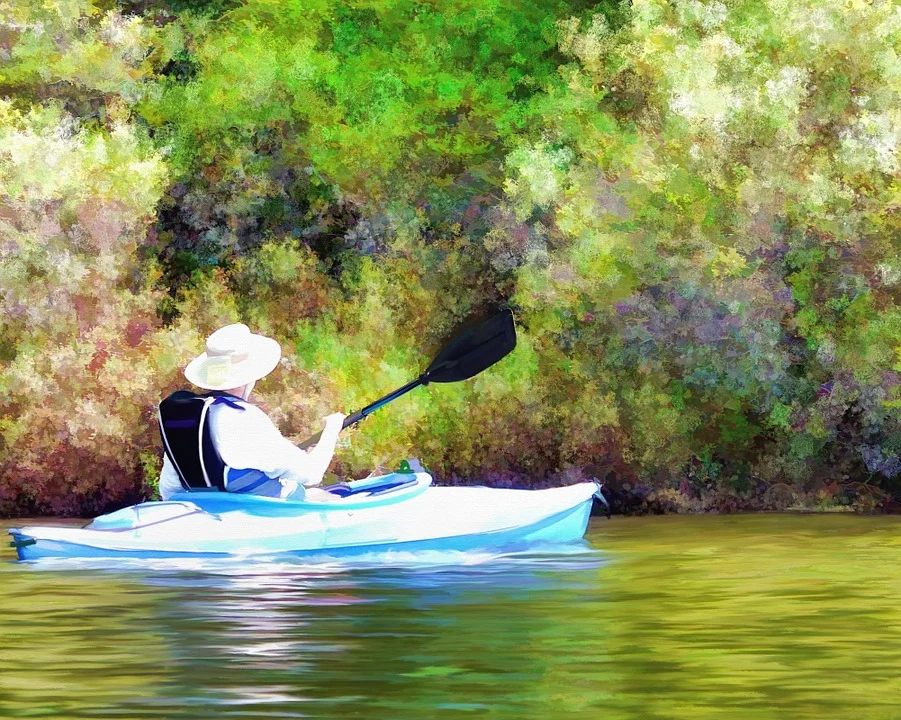
Water will seep into your kayak and beneath your seat, leaving you with damp buttocks. The chilly water and air add to the difficulty in the winter. Your whole wardrobe should consist of products that are both comfy and quick to dry when wet.
You May also like:
Now we’ll go into the specifics of what you should wear and carry with you for your first kayaking trip. For a brief guide on what to wear kayaking, see the video below.
Following are the list Items of What to Wear Kayaking in any Season in 2022:
- Board Shorts / Quick Drying Shorts
- Water Shoes or Socks
- Rashguard, Technical Shirt, or Quick-drying Shirt
- Quick-drying Underwear
- Sun hat
- Wetsuit
- Spray paints
- A life jacket or PFD
- Spray top
- Drysuit
1. Board Shorts / Quick Drying Shorts
Specification:
100% Polyester
Drawstring closure
Machine Wash
Quick-dry UPF 50+ microfiber
Stitch and pull string varies
Boardshort featuring cargo pocket and fixed waistband with lace-up closure
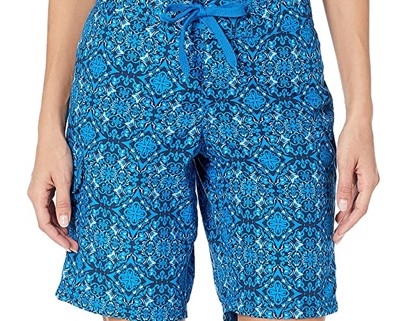
Whatever you’re wearing on your bottom will get wet. Something quick-drying and non-soggy is ideal. Bathing suits are ideal for men. On top of your bathing suit, women may wish to wear board shorts, running shorts, or something else synthetic and rapid drying. Tights are also trendy these days.
2. Water Shoes or Socks
Specification:
- Comfort & Support: Adjustable hook and loop clasp ensures a snug fit while allowing for quick and simple on-and-off; EVA midsole with compression molding for added cushioning; Free of PFCs
- Multi-directional lugs assist and give excellent traction in slick wet conditions; When walking indoors, the non-marking rubber outsole leaves no trace; The iconic toe bumper provides additional protection against harm.
- Water-resistant upper: For active usage in and out of the water, washable polyester webbing with a quick-dry interior; For these water-resistant women’s sandals, a hydrophobic mesh inside helps shed water and extends the life of the cloth.

Water collects in the bottom of kayaks where your feet go. You’ll almost certainly constantly be sat in a puddle. It’s possible that you’ll have to get in and out of the kayak while in the water. Kayaking may be done with any water shoe or sandal. Choose a shoe that will serve you well both before and after you go kayaking.
You might Like: Best Top10 Waterproof Kayak Shoes Spring 2022 for Kayaking & Canoeing
Metal tracks or other fittings on the foot bracing in the kayak might harm your feet. If you have to get out of your kayak, you never know what you’ll tread on in the water. If you glance down into the kayak and there is nothing sharp or metal, you should never go barefoot kayaking.
3. Rashguard, Technical Shirt, or Quick-drying Shirt
Specification:
- 87 percent polyester and 13% spandex.
- There is no closure.
- Long raglan seam-sleeve rashguard with contrast logo screenprint and banded crew collar.
- Washing Machine
- UPF 50+ protection from the sun’s damaging rays.

Rashguards are constructed of lycra/spandex and are quick to dry, comfortable when wet, and most also provide UV protection. They make fantastic shirts for kayaking. This thin layer will keep you dry and comfortable while protecting you from the harsh summer heat.
They use warm water to help you stay cool on hot days. Any other synthetic fast-drying shirt would suffice. Cotton isn’t ideal because it takes a long time to dry once wet. When wet, it loses all of its insulating properties. Cotton is an excellent choice if you want to feel chilly and damp.
4. Quick-drying Underwear
Specification:
- Chafe-free
- Design for water activities such as kayaking
- Antibacterial silver micro thread lining to keep odor at bay
- Comfortable and seamless
- Quick Dry

Under our board shorts, swimming trunks, or paddling pants, you’ll need quick-drying underwear that won’t chafe or stink. After a long day of paddling, no one wants to feel like a swamp down there.
5. Sun Hat
Specification:
- Supplex nylon is used exclusively
- No bleach in Canada, machine wash gentle cycle or hand wash (cold), reshape, and air dry
- Guaranteed for life, certified UPF 50+, 98 percent blocking of dangerous UVA/UVB rays
- 100% Nylon

When you’re out on the water in a kayak, it’s helpful to have some sun protection. Any hat that provides a little shade will suffice.
The ocean has a knack for making hats from people’s heads. Over the years, I’ve lost quite a few to the water. To connect your hat to the rest of your outfit, you need to acquire a hat leash or strap.
6. Wetsuit
Specification:
- EXCELLENT FUNCTIONALITY – Complete range of motion.
- Internal YKK anti-corrosion wetsuit zipper that significantly lowers drag as you go through the water.
- A complete range of motion with 680 percent flexibility is unrivaled.
- Super soft low neck with smooth skin on both sides; it feels like you’re wearing nothing around your neck since it’s so soft.
- PROVEN TECHNOLOGY EQUALS EXCELLENT PERFORMANCE – Yamamoto #39 hydrodynamic neoprene with SCS silicone-covered SyPrene. 3mm lower legs and back / 5mm core buoyancy panel.
- FIT FOR ALL LEVELS – Ironman and USAT certified. Athlete approval.
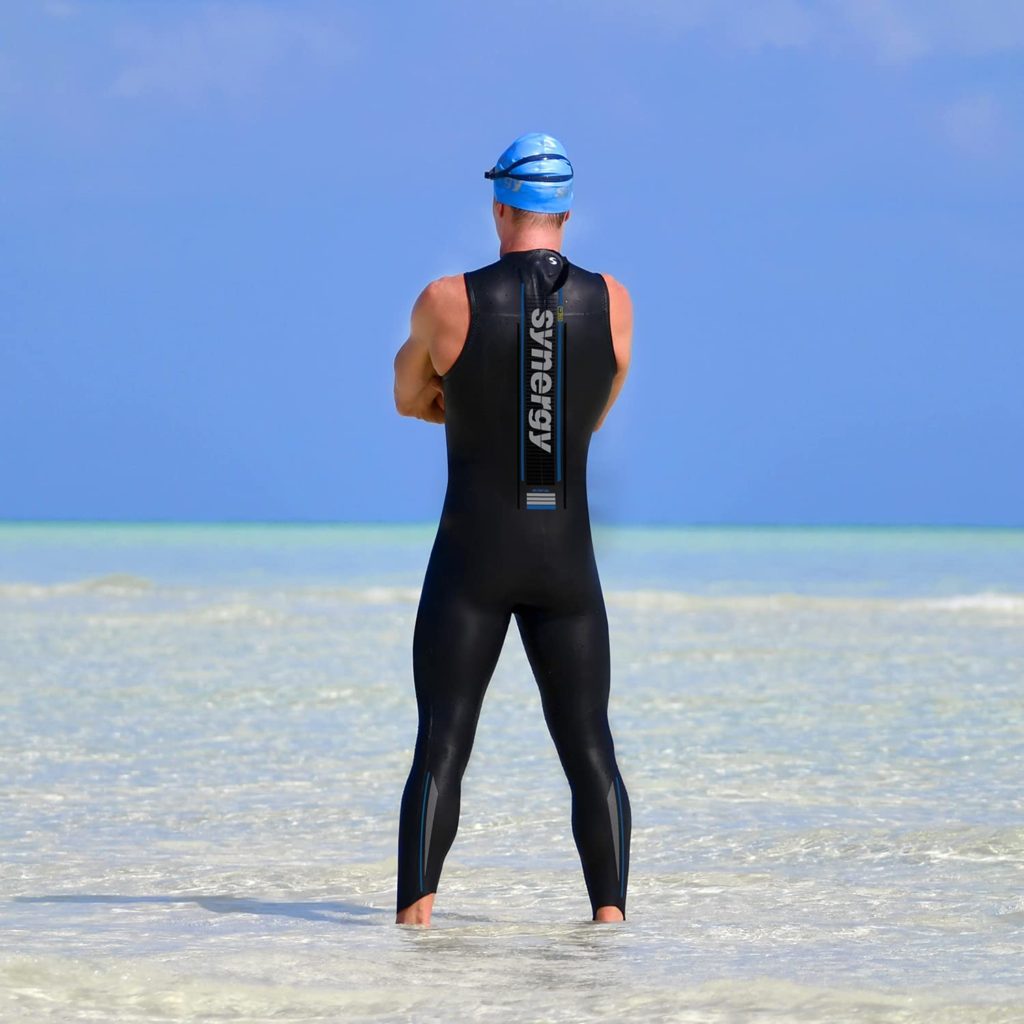
Neoprene booties and gloves are ideal for keeping your feet and hands warm when wearing a wetsuit. Your feet and hands are where you lose a lot of body heat.
When the water temperature is chilly, you may want to consider wearing a wetsuit. A wetsuit is comprised of neoprene and keeps you warm while you’re swimming. By preventing evaporative cooling, a thin wetsuit will assist you to maintain body heat. In colder areas, they might be an excellent idea to wear if you know you’ll be in the water a lot.
When does it get too cold to paddle without a wetsuit? The 120-degree rule is a solid starting point.
A wetsuit is required if the water temperature combined with the air temperature is below 120 degrees F.
A wetsuit is required if the water temperature combined with the air temperature is below 120 degrees F.
As an example. If the air temperature is 75 degrees Fahrenheit and the water temperature is 65 degrees Fahrenheit, the total temperature is 140 degrees Fahrenheit, and you do not need to wear a wetsuit.
When the air temperature is 65 degrees Fahrenheit and the water temperature is 50 degrees Fahrenheit, the total temperature is 115 degrees Fahrenheit. Because 115°F is below 120°F, a wetsuit is required.
7. Spray Paints
Specification:
- Closure by zipping
- Material: Waterproof, windproof, warm, abrasion-resistant, and pill-free, the hiking pants are constructed of 92 percent polyester and 8% spandex.
- Features: Extra warmth, softness, and comfort are provided by the fleece lining. Waterproof and windproof, keeping you warm and dry while skiing.
- Included: The pant’s adjustable elastic waistband with buttons and belts enables a comfortable fit.
- Detail: Multi-zip pockets – front and back security zipper pockets with elastic pull tab, wear-resistant knee fabric

Spray paints are a wonderful alternative if it’s a chilly day and shorts won’t keep you warm enough. Waterproof trousers to keep the wind and rain off your legs. Waterproofing is a must. Breathable material is ideal for preventing sponginess from moisture build-up beneath.
For chilly days, layering with long underwear can assist. Choose a material that dries quickly and isn’t chilly when wet. Cotton should be avoided.
8. A life jacket or PFD
Specification:
- For visibility, use SOLAS grade reflective material.
- Soft, lightweight flotation foam; heavy-duty nylon fabric
- Pockets with mesh drainage and expandable zippers.
- With mesh drainage and an expandable zippered pocket.
- Lower back mesh suits high back seats.
- Pockets with mesh drainage and expandable zippers.
- Entrance funnel with double crimp.
- Adjustable shoulder pads made of neoprene.
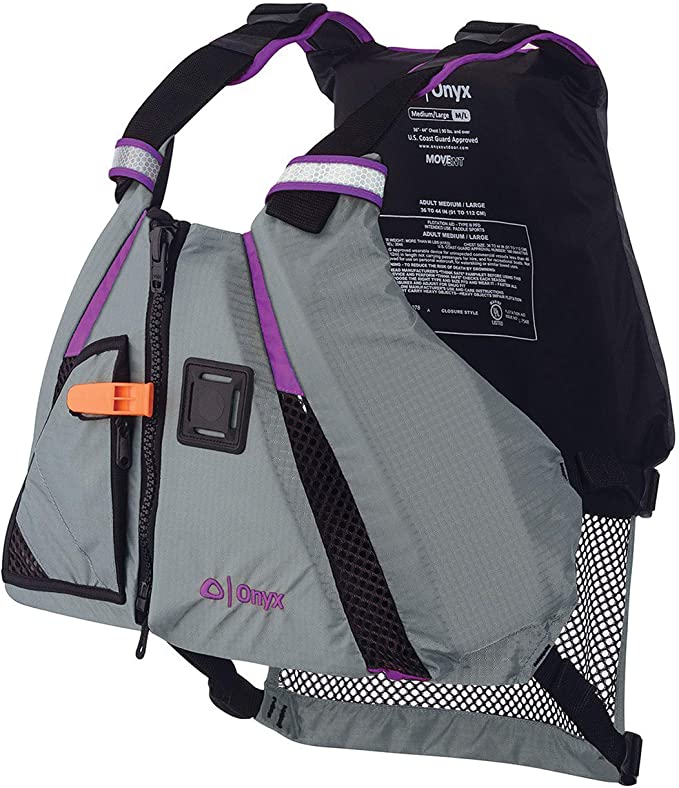
Inflatable life jackets should only be worn if you’re kayaking on a hot summer day with calm water and there’s no possibility you’ll require a PFD.
Suspender or belt inflatable PFDs make appropriate in this situation since they are low profile and pleasant to wear. You’ll be protected if you have a PFD on you. When kayaking, you should never use an auto-inflating PFD.
There are just too many easy ways to forget about it and inflate it, rendering it unusable for the remainder of the day until a new CO2 cartridge is installed.
A comfortable PFD (Personal Flotation Device) or life jacket is the next most crucial item. When kayaking, odds are you’ll find yourself in the water sooner or later. Even if you don’t flip the kayak, you might tumble out or into the water when loading or unloading.
9. Spray Top
Specification:
- EASY ENTRY – You’ll be able to quickly go in and out of the jacket thanks to the 1/4 zip pullover design. If you feel too hot, simply unzip a few inches and let some air in.
- ZIPPER POCKET – There is always something that has to be carried and stowed when we are out on the water. This jacket has a convenient shoulder pocket where you can store your vehicle keys, multitool, credit card, or any other small thing.
- WATERPROOF – Being cold and wet is the worst, which is why this paddling jacket is completely waterproof. This pullover is made of PVC-coated nylon with completely taped seams to keep you warm and dry all day on the lake.

If the weather is chilly and there is some wind and waves, a spray top may be appropriate.
A spray top paired with a spray skirt can effectively shield your entire body from wind and spray.
They’re great for whitewater or sea kayaking in areas with a lot of waves and spray. Spray tops are thin shell coats with a tight fit across the neck, wrists, and waist.
A dry top is a term used to describe them. The wind and spray are well blocked by this outer layer. A basic rain jacket would suffice as long as it is not so loose that water may readily seep up your back. They fold up small enough to be taken on and off as the weather changes.
10. Dry Suit
Specification:
- An extra layer of EclipseLT fabric was used to strengthen some areas.
- Latex wrist gaskets with spandex over cuffs covered in polyurethane.
- Back-entry The YKK Aquaseal zipper minimizes tension by eliminating pressure points and improving flexibility.
- For guaranteed dryness, breathability, and durability, choose EclipseLT fabric.
- Neoprene with a punch The GlideSkin neck seal is more flexible than latex.
- Legs with a single seam decrease wear spots and increase movement.
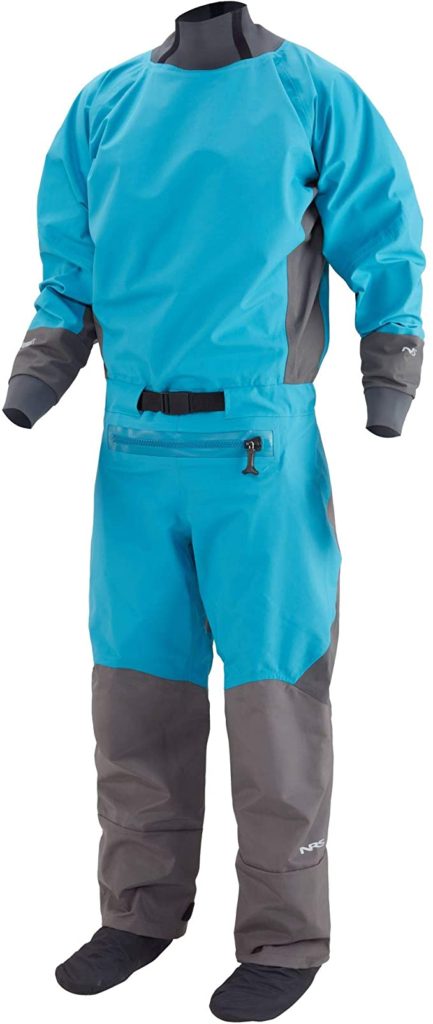
For cold-weather kayaking, I find dry suits to be far more comfortable than wetsuits. They’ll work in water as cold as 32 degrees Fahrenheit. They are also significantly more costly than a wetsuit. Budget between $500 and $1000. A dry suit will allow you to kayak throughout the winter.
There is no replacement for a dry suit when kayaking in the winter. They’re a waterproof shell that wraps around your neck, wrists, and feet to keep you dry. Baselayers, mid-layers, and maybe a sweater are worn as though you were clothing for cold water.
On a hot summer day, how much water do you need to kayak?
When exercising, according to University of Michigan standards, you should drink the following quantities. T
When exercising, according to University of Michigan standards, you should drink the following quantities. The report may be seen here.
At least 2 hours before kayaking, drink 17-20 ounces of water.
While Kayaking, 7-10 oz. of water for every 10-20 minutes of exertion
After Kayaking,16-24 oz. of water for each pound lost due to perspiration
We require 7-10oz every 10-20 minutes on a 2-hour paddle, which is really usual. That’s between 21 and 60 ounces of water every hour. During a two-hour paddle, you can require anything from 42 oz to 120 oz of water. If you paddle for four hours, the quantity will grow from 84 oz to 240 oz.
Have fantastic Kayaking
I wish you the best of luck on your kayaking adventure. Choosing the correct clothing for your time on the water may make it much more comfortable and pleasant.

